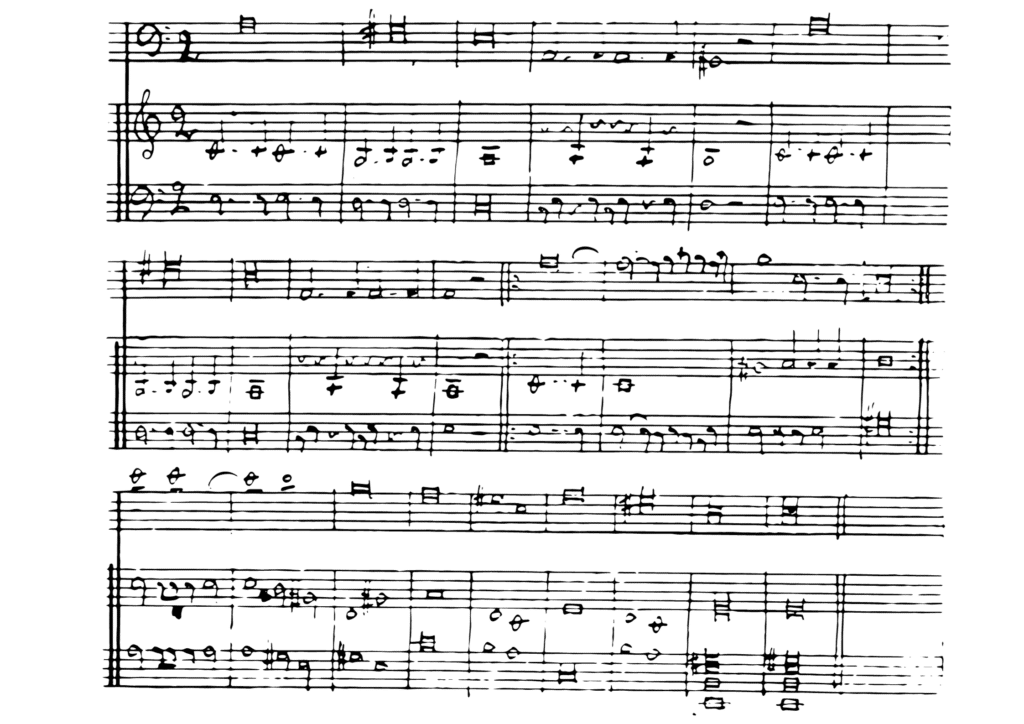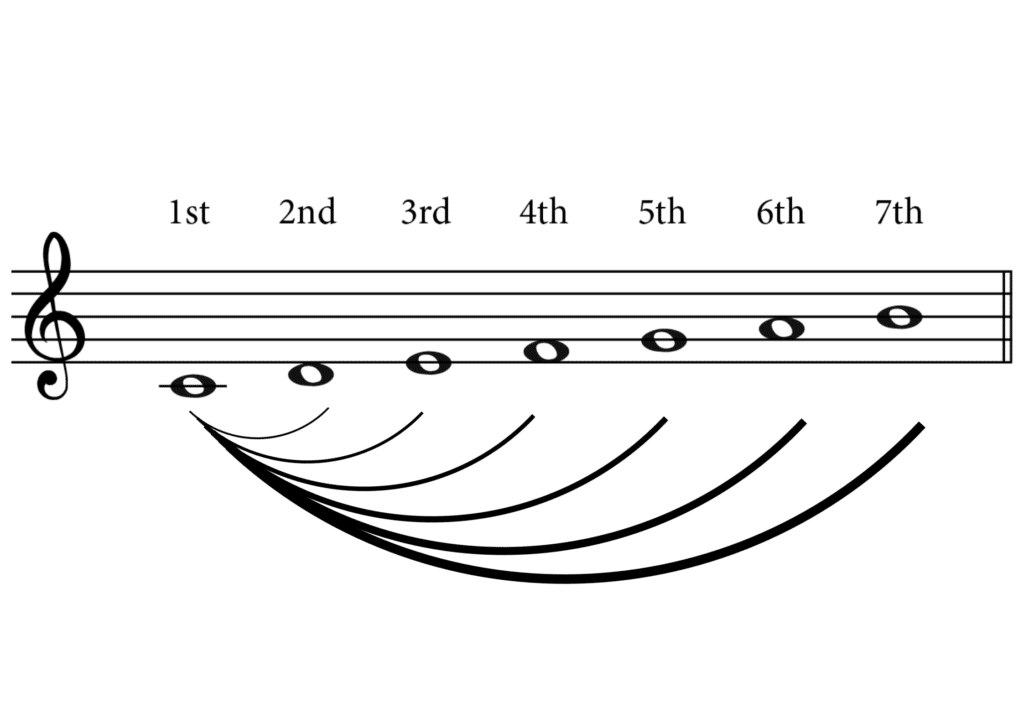We hear a lot of songs with harmony nowadays. One voice in a song can be beautiful, but additional vocals add so much flavor and richness to a song. Singing harmony for beginners can be a little tricky initially but I am gonna help you Learn vocal harmony online.
Singing harmony for beginners is basically learning to mix various pitches and tones together producing rich and beautiful sounds. This blog is going to help singers at any level in understanding musical intervals for harmony and how to sing harmony with chords along with few yet powerful harmony singing tips.
Learn Vocal Harmony online with me today!

What is Vocal Harmony?
Before we get into the concept in depth, let’s look at the meaning of it in any dictionary?
It reads, a pleasant musical sound made by different notes being played or sung at the same time is called a vocal harmony. Interesting words, isn’t it?
Vocal harmonies made it to the top in the era of Renaissance when Mass melodies started to be harmonized in thirds and sixths. Thus, singing harmonies became an important part of Western Classical Music.
Simply put, singing harmony for beginners begins at understanding harmony is two or more sounds being sung simultaneously. When a harmony is executed successfully, two or more vocal parts combine in an arrangement that gives a song greater emotion, depth, texture, and possibly even a sense of serenity. This has also become an integral part of songs that are composed today in almost all genres.
A Brief History of Harmony Singing.
Since the arrival of Mass melodies(in churches) harmonised in beautiful thirds and sixths(intervals in Music) during the Renaissance period, vocal harmonies became an important part of Western art music. Congregations began singing hymns in four- or five-part vocal harmony. These hymns are still used in churches even today.
Vocal harmonisation evolved throughout the Romantic era of music in the 1800s. Arrangers are the musicians who write these harmony parts in a music sheet. They started including more discordant harmonies.
Understanding musical intervals for vocal harmonies that sounds tight and include augmented and diminished intervals are frequently used to highlight the drama in operas and choral music from the Romantic era. Composers of modern music in the 1900s and 2000s placed more challenging requirements on choirs singing in harmony singing, such as direction to sing microtonal notes (Musical intervals smaller than semitones).
Too many big words? I know, bare with me. It gets easier.
Little light into how bands use vocal harmonies while performing live. Musical bands have Lead singers and backup singers. These Backup singers must be able to change the pitch of their notes in order to harmonize with the lead singer and the band’s instruments’ pitches when singing vocal harmony in a pop or rock genres. The rhythm of the backup harmony sections must also match that of the rhythm section and the main singer. While some bands use very straightforward harmony vocals, supporting the vocal lead throughout the chorus parts with extended, slow-moving vocal harmony notes, other bands turn the backup vocalists into more equal partners of the lead vocalist.
Being a Lead singer in several bands and choir, I started my career as a backup singer in a band called ‘Pop & Blues’ back in my hometown. I had mostly developed my hearing skills and started harmonizing by trying to blend in my notes with that of the lead melody. It’s no easy task but as we keep trying to blend in with the concepts of musical intervals at the back of our heads, well, that is a good place to start. Listening to tons of music with harmonies and songs with interesting progressions helps the most when I try to write Music. Music theory ie., Some theoretical knowledge about a few concepts relating to Harmony vocalization does come in handy while practicing and performing.
Let’s look into a few concepts I picked up to spice up the harmony.

Did You Know?
Barbershop Quartets sing 4-part pieces, made up of a melody line (normally the lead) and 3 harmony parts.
Singing harmony for beginners 101
Many aspiring singers including myself, even beginners, use blogs like these to learn vocal harmony online. Singing harmony for beginners can be a tad bit challenging! But hey, what can’t be done with practice?
- It’s very important to know which scale the material is written in.
I learnt the concept of Circle of fifths to quickly get hold of the key. The circle of fifths is a way to visualize the twelve musical keys and put them in a convenient order. It’s used in music to help remember the notes that make up each key and group similar keys based on the notes that they share. This concept also helped me in knowing whether a key is major or minor, as well as information about related keys. This one concept teaches anyone on how to sing harmonies with chords.
- We then need to learn the intervals.
Understanding Musical intervals for harmony starts by understanding what melodic intervals are. Check out my blog on Intervals of Music . The melodic intervals present in each key before you can begin harmonizing notes. Here is an instance for grasping singing harmony for beginners. Let me use the key of C Major as an example because it doesn’t contain any sharps or flats. The notes of the key of C major would sound like this on the piano:
C-D-E-F-G-A-B
To gain a sense of the key, it’s a good idea to play or sing these notes one after the other. For instance, if you have a solid understanding of the key of C, you may start examining the chords that are made up of these intervals. The most basic chord in the key of C Major is made up of three notes (C-E-G) . I used these notes all at once on the piano to hear how they blend and harmonise with one another.

So guys, begin with understanding and practicing melodic intervals to learn vocal harmony online.
How to Harmonise with Chords?
Harmonising with the melody was not always sufficient to me. To give the piece of music a grandeur sound I thought I must start to learn to write chord progression.
This is where practicing how to harmonize with chords can come in handy. To comprehend the concept of chords, check out Piano Chords for Beginners. Let’s use our example of C major again.
Let’s say that the chord progression we’re using is:
C Major / F Major / A Minor / G Major / Cv
- C Major – C-E-G
- F Major – F-A-C
- A Minor – A-C-E
- G Major – G-B-D
Let’s say the chords switched every single bar and the melody only used chord tones in each chord. As you can see, using C as a melodic note for the first chord (C major) would likely be a great choice, as it’s the root of the chord. I have now used F major as the next chord in the progression which is perfect fourth. Minor sixth, A minor chord to add in little color and back to diatonic interval perfect fifth- G Major.
Initially when I started to harmonize my vocals I would play these progressions on the piano to understand the feel. It also helped me in knowing if I have used the right notes. However, I learnt that this isn’t the ideal way of writing harmony. To write a choral arrangement we must be able to write without having played it on the piano or any instrument. That’s where music theory comes into play.
How to Sing Third Harmony?
Singing a note in the interval of thirds below or above any note is called thirds harmony. Continue reading to learn how ro sing third harmony.
- Begin with understanding the known or the lead melody to which you want to sing third harmony.
- Secondly, find the interval of third. Initially try to rely on a piano or any instrument.
- Thirdly, keep practicing until you get hold of the intervals of thirds.
- Lastly, once you find the sound, record it and check if it synchronizes with the mead melody!
While you are trying out thirds, you can also check out these Fifths harmony singing tips!
- Adding fifths to a harmony adds so much richness and a sense of completeness to a tune. Now that we’ve figured out how thirds work, singing in the intervals of any note is called fifths harmony.
- Fifths harmony singing tips begin from identifying or finding out the interval.
- Get familiar with the given melody and now try to blend the harmonies. It’s very important to maintain the pitch perfectly to bring out the complete sound.
- Another great fifths harmony tip is to try singing the same notes in different octaves.
Developing Aural Skills (Ear Training)
It is a good idea to practice basic ear training to get more comfortable singing and playing harmonies. Connecting notes, intervals, scales, chords, melodies, and harmonies with what we hear is the process of ear training.
The improvement of aural skills is one of the key goals of this kind of training. I was able to recognize sounds by ear, give them names, write them down, and sing or play them again. As a person develops their aural talents, they can improvise using their knowledge of harmonic principles.
There are apps on the app store that give out sample music and other things to help improve aural skills.
Learn to Read Sheet Music
So learning to read sheet music helps me alot when I try harmonizing. Listening to tons of music with vocal arrangement and looking at music pieces with vocal arrangements on scores is another great way to start. It gives me a grip of what I can and cannot do. It also helps me in knowing good to best works.
A very vast online collection of sheet music is easily accessible on the internet and is highly beneficial for developing a harmonious knowledge. You can have a better understanding of how expert authors and composers write harmony in their music by reading their sheet music.
You can hear how melodies grow over chord progressions or how a certain chord tone is applied on top of a melody to give it a distinctive taste. Go ahead try the tips put out in this video to start reading music in ease.
Lastly I am finishing this write up with a link to an amazing and free application called Musescore. It lets you write notes and listen to it while cooking up an interesting arrangement. As always said, practice does make this process quite easy and worth paying attention to. This is another useful tip to learn vocal harmony online and free.
You can enter notes using your computer keyboard by following these steps:
➢ Click in the bar or on the rest where you want to begin entering notes.
➢ Press N to enter Note Entry mode. A blue cursor will appear.
➢ Select the rhythmic value of the note by pressing one of the numbers 1 – 7.
➢ Lastly, choose the pitch of the note by pressing one of the letters A – G on your.
computer keyboard. The note will appear in your score.
You can hear your score by using the playback (“transport”) controls at the top of the screen:
➢ Click on the Play button now to hear the score. A blue playback line will
move through your score as it plays.
➢ Stop playback at any time by clicking on the Play button a second time.
➢ Return the playback line back to the start using the Rewind to Start button.
Other playback tips:
➢ Press the spacebar to start or pause playback.
➢ To playback from a specific place in the score, select a single note and
then press spacebar.
Change playback sound of an instrument:
➢ Open the Mixer – press M.
➢ Change sound of an instrument by clicking on the Sound drop-down menu
You can also create chords as you write the notes.
Easy Vocal Harmony Exercises
Try out these easy vocal harmony exercises to understand the intervals in music.

Did You Know?
Harmonies appear when two frequencies are strike together!
Final Remarks!
This blog gives you clear cut ideas about harmony singing , how to get started in singing harmonies for beginners and ways to learn vocal harmony online. To learn more and to produce your own arrangement or learn vocal harmonies online book a demo with us today! Happy Harmonising.
FAQs
What exactly is singing harmony?
A pleasant musical sound made by different notes being played or sung at the same time is called a vocal harmony.
Is it hard to learn how to sing harmony?
No, it is not hard to learn to sing harmony.
What are the basic types of vocal harmony?
- Parallel: two or more parts move in the same direction.
- Oblique: one part stays the same while the other part moves.
- Contrary: tow or more parts move in opposite directions.
Do I need to know music theory to sing harmony?
Yes, music theory is an absolute requirement to sing harmony.
Can I learn harmony even if I’m not a great singer?
Yes, you can learn Harmony even if you are not a singer.

































